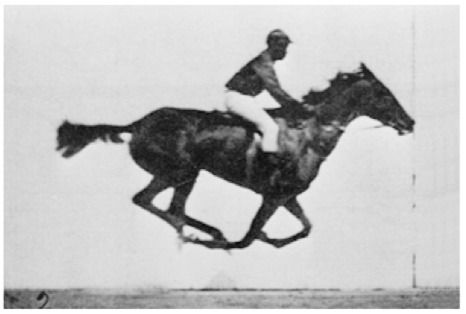Equine Movement and Muybridge
- Gillian Higgins

- Jan 24, 2021
- 4 min read
Updated: Nov 30, 2022
Ever since, as a student in Cirencester when Gillian came across the work of Edweard Muybridge, she was fascinated by his photographic studies of horse movement. A few years later she came across a poster showing his work. That poster is still on her office wall!
Edweard, a photographer born in England but who had emigrated to America in 1850, became involved in equine locomotion when Leland Stanford, a horseman and former Governor of California who was interested in horse gait analysis, disagreed with the general fashion in which horse gaits were portrayed in paintings of the day.
At that time, the style was for galloping horses to be painted with their forelimbs and hindlimbs stretched out in front and behind respectively.
To learn more about the history of the study of equine anatomy and movement, watch the Free video lecture in the Horses Inside Out Academy HERE
As well as being a Governor and businessman, Stanford was an owner, breeder and trainer of racing standardbreds and thoroughbreds. He was particularly interested in understanding the gaits and improving the performance of his horses. He was especially keen to study the relative position of the horses’ legs in motion. He was also very interested in art and science. He believed that the accepted theory of the relative positions of horses’ feet in rapid motion was incorrect but almost impossible to see with the naked eye. He also believed that photographic images would prove the actual position of each limb in each moment of the stride. After all, in those days, the camera could not lie!
At this point, enter Edweard Muybridge! Muybridge was a cutting edge photographer. He was employed by Leyland to prove that in the gallop, there was a moment where all the horses’ legs were off the ground simultaneously. After a few unsuccessful attempts, Edweard came up with the idea of arranging 24 cameras at intervals of 27 inches,
The cameras were attached to tripwires to be triggered by the horse's legs. The photographs were taken in rapid succession - one twenty-fifth of a second apart to be exact. The selected mare, Sallie Gardner, was put to gallop at 36 miles per hour.
The images taken by Muybridge were processed immediately onsite and so proved that at certain points of the stride, the mare lifted all four legs off the ground together. This proved without a doubt that there was a moment of suspension in gallop.
Using his own invention Muybridge went on to put the images together creating a proto-motive. The world's first ever movie was of a galloping horse!!
As well as proving Leyland’s theory to be correct, Edweard was also able to study the sequences of footfalls in all the gaits. Considering the primitive nature of his equipment, this is an amazing feat and was only achieved through ingenuity and perseverance . As well as having an enormous influence in our understanding of equine locomotion, Edweard also had a considerable influence on the artists and scientists of his day.
After University, Gillian began her career as an equine sports and remedial therapist and later went onto founder Horses Inside Out. For many years an embryonic idea was forming in Gillian’s mind. What about putting together a catalogue of equine movement in the style of Edweard Muybridge but brought well and truly into the 21st century? The project began in 2015. With the help of enthusiastic helpers, horses were painted and movements performed.
Captured by Horses Inside Out’s wonderful photographer and videographer Matthew Roberts, to be presented as a progressive series of images in fold out pages, Anatomy in Action was well on its way. The book has been designed to enable the reader to imagine what is happening under the skin and to enjoy the versatility, elegance, strength, beauty and athletic prowess of the horse in motion.
The movements are not intended to be perfect; the horses are all working towards achieving their personal best. Although some knowledge of anatomy and biomechanics is useful, it is by no means a prerequisite for anyone’s appreciation of the book. The images can be enjoyed by the amateur who is in awe of the capability and elegance of our noble friends or by the professional who will study observe, analyse, interpret and learn from how the horse moves.
To enhance your experience, hone your observational skills and enable you to enjoy the images, linked videos are accompanied by voice over explanations.
Consisting of over 250 images, 28 fold out pages accompanied by 28 slow motion videos, the book includes horses from a wide variety of disciplines performing a variety of gaits.
Seeing the images and videos in Anatomy in Action makes us appreciate what a long way we have come both in our understanding of ‘How the Horse Moves ‘ and how, with all our cutting edge photographic equipment and modern technology, we are able to capture the movement, elegance and beauty of these wonderful creatures.













Comments